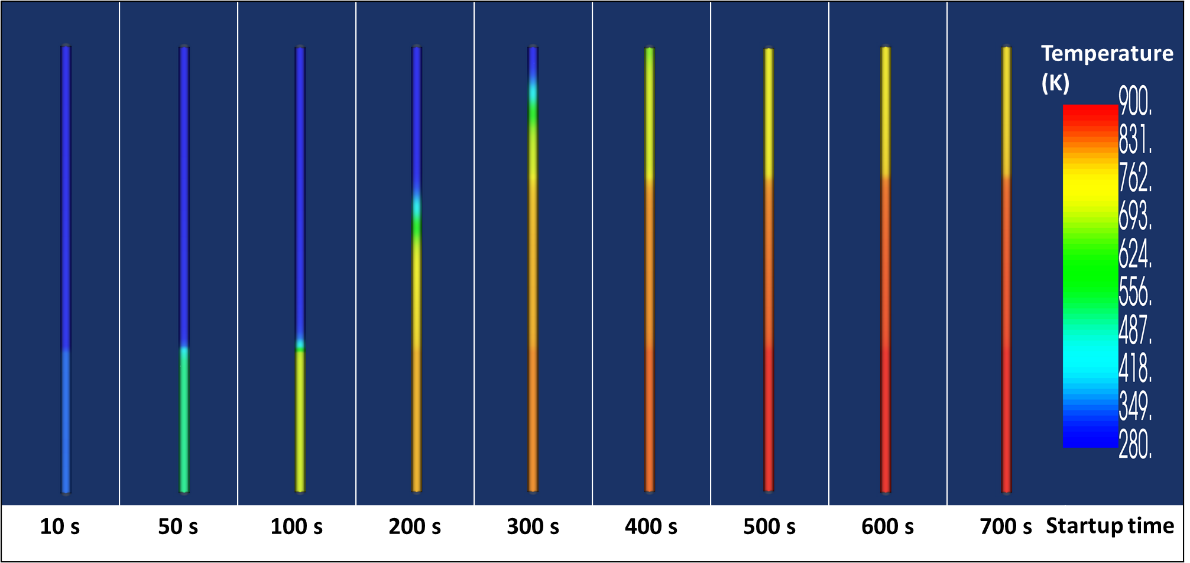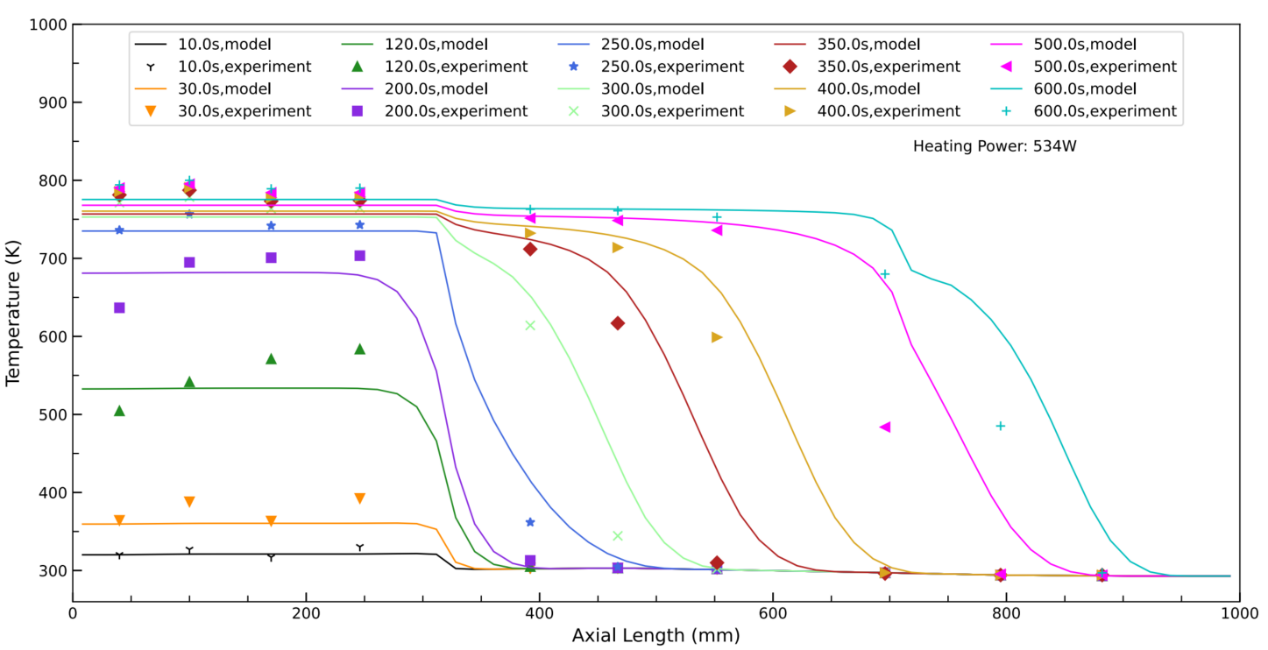
Recently, a research group led by Prof. YU Dali from Hefei lnstitutes of Physical Science (HFIPS), Chinese Academy of Sciences (CAS), has successfully developed a numerical model capable of initiating the frozen startup of the high-temperature heat pipe (HTHP) under various conditions which are present.
The research results were published in Applied Thermal Engineering.
The HTHP plays a crucial role as the key heat transfer component in heat pipe nuclear reactors, and its frozen startup characteristics significantly impact the dynamic response performance of the reactor.
In this study, scientists explored the frozen startup characteristics of HTHP at different inclination angles, power levels, and condensation conditions. This effort unveiled the intricate mechanisms governing the working temperature, temperature difference, and startup time of the high-temperature heat pipe as affected by the heating power.
Moreover, the team developed a three-phase physical model of frozen startup based on compressible flow. The results show that the model is capable of accurately predicting the heat pipe wall temperature distribution and the vapor forwarding front in very large power range.
"Our findings provide a physical model basis for the design optimization and autonomous operation of heat pipe reactors," said Prof. YU Dali.

Figure. 1 HTHP Startup Procedure (Image by LI Jian)

Figure.2 HTHP wall temperature distributions during startup (Image by LI Jian)